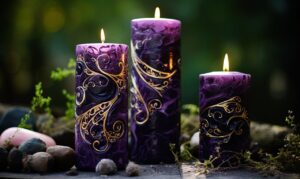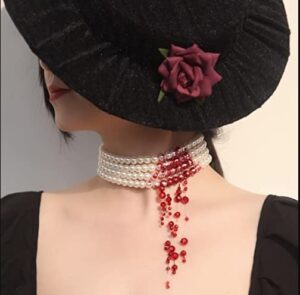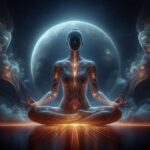Introduction to vampire popularity
Ah, the allure of the undead! As a connoisseur of the macabre, I’ve witnessed firsthand the meteoric rise of vampire popularity in recent decades. From the shadowy corners of gothic literature to the glittering silver screens, these creatures of the night have sunk their fangs deep into our collective consciousness, leaving an indelible mark on popular culture.
In this fang-tastic exploration, we’ll unravel the threads that have woven vampires into the fabric of our modern mythology. Brace yourselves, for we’re about to embark on a journey through the twilight realms of vampire lore, uncovering the secrets behind their enduring appeal and the far-reaching impact they’ve had on various industries.
So, grab your garlic (or perhaps a stake, if you dare), and let’s delve into the captivating world of vampire popularity.
The history of vampires in pop culture
Vampires have stalked the shadows of human imagination for centuries, their origins rooted in ancient folklore and superstitions. From the blood-drinking demons of Eastern European legends to the seductive undead of Victorian gothic novels, these creatures have long captured our fascination with the unknown and the forbidden.
It wasn’t until the late 19th century, however, that vampires truly sank their fangs into the mainstream. Bram Stoker’s seminal novel, “Dracula,” introduced the world to the charismatic Count, a figure that would become the archetype for countless vampire tales to come. This literary masterpiece not only sparked a craze for all things undead but also set the stage for the genre’s evolution across various mediums.
As the 20th century dawned, vampires began to spread their wings, taking flight in the realms of film, television, and even comic books. From the iconic silent film “Nosferatu” to the campy yet beloved “Buffy the Vampire Slayer” series, these bloodsuckers have proven their staying power, adapting to the changing tides of popular culture while retaining their core allure.
The rise of vampire books and literature
While vampires have thrived across various mediums, their true domain has always been the written word. From the brooding, romantic heroes of Anne Rice’s “Vampire Chronicles” to the deliciously dark and twisted tales of Stephen King, authors have breathed new life (or should I say, undeath?) into the vampire mythos.
But it was the arrival of a certain sparkly immortal that truly ignited the vampire literary phenomenon. Stephenie Meyer’s “Twilight” saga swept the world off its feet, captivating millions with its tale of forbidden love between a human and a vampire. This cultural juggernaut not only spawned a blockbuster film franchise but also reignited the world’s obsession with these creatures of the night.
Since then, vampire literature has flourished, with authors exploring the genre’s boundaries and pushing the limits of what it means to be undead. From gritty urban fantasies to genre-bending young adult novels, the vampire book market has become a veritable smorgasbord of bloody delights.
Vampire movies and television shows that shaped the genre
While literature has been the beating heart of vampire popularity, it’s on the silver screen where these creatures truly come to life (or undeath, if you prefer). From the classic horror flicks of the 1920s to the modern-day blockbusters, vampire movies and television shows have left an indelible mark on our collective psyche.
Who could forget the chilling performance of Bela Lugosi in the 1931 classic “Dracula”? Or the deliciously campy yet iconic portrayal of the Count by Christopher Lee in the Hammer Horror films? These early cinematic depictions set the stage for the genre’s evolution, paving the way for the more complex and nuanced portrayals that would follow.
In the realm of television, shows like “True Blood” and “The Vampire Diaries” have taken the vampire mythos to new heights, exploring themes of love, power, and the ever-present struggle between humanity and monstrosity. These small-screen sagas have captivated audiences worldwide, weaving intricate narratives that delve into the depths of the vampire psyche.
And let’s not forget the cultural phenomenon that was the “Twilight” film saga. With its brooding protagonists and heart-pounding romance, these movies ignited a fervor among fans that transcended mere fandom, becoming a global phenomenon that forever altered the landscape of vampire pop culture.
Vampire fashion and aesthetics
 Vampires have always been more than just bloodsucking creatures of the night; they are icons of style and sophistication. From the gothic elegance of Dracula’s cape to the modern-day allure of the “Twilight” protagonists, vampire fashion has left an indelible mark on the world of couture.
Vampires have always been more than just bloodsucking creatures of the night; they are icons of style and sophistication. From the gothic elegance of Dracula’s cape to the modern-day allure of the “Twilight” protagonists, vampire fashion has left an indelible mark on the world of couture.
In the realm of haute couture, designers have drawn inspiration from the dark and seductive allure of vampires, crafting collections that evoke a sense of mystery and danger. From flowing capes and corsets to sleek, form-fitting silhouettes, vampire-inspired fashion has become a staple on the runways and in the wardrobes of the fashion-forward.
But it’s not just clothing that has been influenced by these undead trendsetters. Vampire aesthetics have permeated various aspects of popular culture, from hairstyles and makeup to home decor and even automotive design. The brooding, gothic charm of vampires has become a sought-after aesthetic, inspiring countless individuals to embrace their inner creatures of the night.
Vampire fan communities and conventions
Where there are passionate fans, there are dedicated communities – and the world of vampire fandom is no exception. From online forums and fan fiction hubs to real-world conventions and gatherings, vampire enthusiasts have carved out their own unique niche within the broader realm of pop culture.
These communities serve as havens for like-minded individuals, where they can share their love for all things undead, discuss their favorite vampire tales, and even cosplay as their beloved characters. Conventions like the annual “Vampire Ball” and “Endless Night” have become must-attend events for fans, offering a chance to immerse themselves in the world of vampires and connect with fellow enthusiasts.
But these communities are more than just a gathering of fans; they are also a driving force behind the continued success of the vampire genre. Through their unwavering support and dedication, they have helped to shape the narratives and aesthetics that define the vampire experience, ensuring that these creatures of the night remain relevant and beloved for generations to come.
The impact of vampire popularity on other industries
The influence of vampire popularity extends far beyond the realms of literature, film, and fashion. Like a contagious virus, the allure of these undead creatures has permeated various industries, leaving an indelible mark on everything from tourism to gaming. 
In the world of travel and tourism, destinations with a rich vampire history or associations have seen a surge in popularity. From the infamous Bran Castle in Romania (rumored to be the inspiration for Dracula’s lair) to the vampire-themed tours and events in New Orleans, these destinations have capitalized on the public’s fascination with the undead, offering unique and immersive experiences for thrill-seekers and vampire enthusiasts alike.
The gaming industry, too, has embraced the vampire craze, with countless video games, role-playing games, and even online virtual worlds centered around these creatures of the night. From the classic “Castlevania” series to the immersive “World of Darkness” universe, gamers have been given the opportunity to step into the shoes of vampires, exploring their powers and navigating the intricate politics of the undead world.
Even the culinary world has felt the bite of vampire popularity, with themed restaurants, cocktails, and even confections inspired by these blood-craving creatures. From the “Vampire Cafe” in Tokyo to the “Bloody Mary” cocktail, the influence of vampires has left its mark on our gastronomic experiences, adding a touch of the macabre to our dining and drinking adventures.
Exploring the vampire niche market
As vampire popularity has soared, a thriving niche market has emerged, catering to the desires and interests of the most dedicated fans. From specialized merchandise and collectibles to immersive experiences and even vampire-themed vacations, this niche market has become a lucrative and ever-expanding industry.
For the true vampire enthusiast, the options are virtually endless. Collectors can indulge in a vast array of vampire-themed memorabilia, ranging from rare editions of classic novels to intricately crafted figurines and artwork. Online marketplaces and specialty stores have become treasure troves for these coveted items, allowing fans to curate their own personal collections of undead treasures.
But it’s not just physical goods that drive this niche market; experiences and events have also become a major draw. From vampire-themed escape rooms and haunted house attractions to immersive role-playing events and even vampire-inspired cruises, the opportunities for fans to fully immerse themselves in the world of the undead are truly limitless.
Vampire myths and legends around the world
While the modern depiction of vampires has been heavily influenced by Western literature and pop culture, the origins of these creatures can be traced back to various myths and legends from around the globe. Each culture has its own unique interpretation of the vampire, reflecting its beliefs, superstitions, and folklore.
In Eastern Europe, for instance, the vampire is often portrayed as a reanimated corpse that feeds on the living, with various rituals and practices employed to ward off these undead entities. From burying the dead with stakes through their hearts to scattering seeds or grains around their graves, these traditions have become woven into the fabric of local folklore.
In Asia, the concept of the vampire takes on a different form, with creatures like the “jiang shi” of Chinese mythology or the “penanggalan” of Malay folklore. These beings are often depicted as reanimated corpses or disembodied heads that prey on the living, reflecting the region’s rich cultural tapestry and belief systems.
Even in the Americas, tales of blood-drinking creatures have existed for centuries, with indigenous cultures like the Aztecs and Mayans having their own versions of vampire-like entities. From the “cihuateteo” (female spirits who craved human blood) to the “tlaciques” (bloodsucking witches), these legends have added depth and diversity to the global vampire mythos.

Conclusion: The enduring appeal of vampires
As we reach the end of our fang-tastic journey, one thing becomes abundantly clear: the allure of vampires is far from waning. These creatures of the night have sunk their fangs deep into our collective consciousness, captivating us with their seductive charm, their eternal struggle between humanity and monstrosity, and their embodiment of our deepest desires and fears.
But what is it about vampires that has kept us so enthralled for centuries? Perhaps it’s their representation of the ultimate outsider, forever existing on the fringes of society, that resonates with our own yearning for belonging. Or maybe it’s the notion of immortality, the promise of eternal youth and power, that ignites our innermost fantasies.
Whatever the reason, one thing is certain: the vampire phenomenon is here to stay. As long as we crave tales of the supernatural, the forbidden, and the deliciously dark, these undead creatures will continue to stalk the shadows of our imagination, forever etching their mark on the annals of popular culture.
And for those whose fascination with vampires transcends mere fandom, there are even whispers of arcane rituals and spells to become a vampire that promises to grant the gift of undeath. While the pursuit of such dark magic is fraught with danger and uncertainty, it speaks to the depths of our obsession with these immortal beings.
As the sun sets on our exploration, I implore you to embrace your inner creature of the night. Indulge in the tales, immerse yourself in the aesthetics, and let the allure of the vampire world sink its fangs into your very soul. For in the end, we are all but mere mortals, captivated by the eternal seduction of the undead.
The Article Vampire Popularity – Unveiling the Fang-tastic Rise First Appeared ON
: https://ad4sc.com
The Article Vampire Popularity – Unveiling the Fang-tastic Rise Was Found On https://limitsofstrategy.com



I love how you captured the enduring allure of vampires! It’s interesting to think about not only their evolution in literature and film but also how they reflect deeper societal fears and desires. Take “Twilight,” for example; it really shifted the focus from classic horror to romance and youth angst, making vampires relatable in a whole new way.
You make a great point about the shift in vampire narratives, especially with “Twilight.” It’s fascinating how the portrayal of vampires can reflect the emotions and experiences of different generations. What struck me about “Twilight” was how it tapped into the complexities of adolescence—identity, love, and the struggle for acceptance.
You’ve really captured a key aspect of “Twilight” and its impact on how we view vampires. The way it intertwines themes of identity and love with the turmoil of adolescence definitely resonated with many young people when it first came out. It’s interesting to think about how the vampire archetype has evolved; from the terrifying monsters in classic literature to more relatable, even romantic figures.
You’ve really hit the nail on the head with that observation about “Twilight.” The way it intertwines those themes of identity and love with the turmoil of adolescence is such a poignant reflection of that transitional phase many of us go through. It’s fascinating how vampires, once symbols of fear and death, have morphed into these complex characters grappling with their existence and emotions, mirroring the struggles of young adulthood.
You make a really interesting observation about the complexity of the characters in “Twilight.” The way those themes of identity and love play out in the context of adolescence definitely resonates with many people. I think it’s remarkable how the series captures that feeling of trying to find yourself amidst the chaos of young love and all the pressures that come with it.
You’ve touched on something really important there. The way the characters navigate their identities is so relatable, especially when you think about how messy and intense those teenage years can be. The allure of first love often clouds judgment and pushes boundaries. Bella, for example, isn’t just caught up in her feelings for Edward; she’s also figuring out who she is in relation to him and the supernatural world around her.
You’ve touched on something really pivotal about “Twilight” and its portrayal of adolescent struggles. The interplay between identity and love is fascinating, especially in a context where young people often find themselves under immense pressure—be it from peers, family, or social media. The fact that Bella, in her search for self, becomes intertwined with Edward’s world adds layers to her journey. Her transition from a somewhat uncertain teen into a figure willing to embrace the unknown challenges the stereotype of the helpless damsel.
You’ve really captured something essential there—the way “Twilight” navigates the complexity of adolescent emotions through its characters. It’s interesting to think about how the idea of vampires has shifted over time. In the past, they were often seen as unfeeling creatures, embodying fear and danger. Now, they seem to reflect more of our inner struggles, almost like a metaphor for the intense feelings and experiences that come with growing up.
It’s interesting to think about how “Twilight” really tapped into that mix of identity and love during such a confusing time in life. The whole vampire thing definitely adds a layer to those struggles. We often think of vampires as purely terrifying, but in this series, they end up reflecting a lot of the messy feelings that come with growing up—like the fear of not fitting in or the pressure to figure out who you really are.
You bring up such a compelling point about how “Twilight” captures those tumultuous feelings of identity and love during adolescence. The way vampires are traditionally viewed—creatures of horror—acts as a fascinating contrast to the nuanced portrayal of their struggles in the series. It’s interesting to see how the supernatural can amplify very real human emotions.
You’ve hit the nail on the head with your observations about “Twilight” and its wild ride through the choppy waters of adolescence. It’s like Stephenie Meyer took the classic vampire lore and added a sprinkle of high school drama, which honestly feels like the perfect recipe for chaos—and where there’s chaos, there’s plenty to unpack.
You’ve brought up such an interesting angle on “Twilight.” The blend of vampire lore with the intricacies of high school drama really does create a unique chaos that resonates with so many people. It’s fascinating how Meyer managed to tap into those quintessential adolescent experiences—the thrill of first love, the struggle for identity, and the feeling of being an outsider.
You’ve highlighted something really significant about “Twilight”—the way it flips the traditional vampire narrative on its head. Instead of just monsters lurking in the shadows, we get these characters grappling with real issues like love, acceptance, and the fear of being misunderstood. This blend of the supernatural with those raw, human emotions makes the story resonate with so many young readers.
You’ve really tapped into something essential with your thoughts on “Twilight” and the way it intertwines the supernatural with the very real turbulence of adolescence. It’s fascinating how the vampires symbolize more than just traditional horror elements; they become metaphors for those overwhelming feelings we all grapple with during our teenage years.
You’ve really captured the essence of “Twilight” and its exploration of identity and love in a time that feels so turbulent. It’s fascinating to think about how the vampire metaphor creates a unique lens through which we can examine adolescent struggles. The way those characters grapple with their dual natures — trying to balance their supernatural instincts with human emotions — often mirrors the conflicts we face while figuring out who we are.
You captured something really important about “Twilight” that resonates on so many levels. The way it addresses identity and love within the chaos of adolescence speaks to a deeper yearning for understanding during those formative years. It’s interesting how Bella’s journey mirrors the universal struggle of trying to find oneself amidst the pressures of growing up.
You’ve really honed in on a key element of “Twilight” that often gets overlooked in the broader conversation about the series. Bella’s experience isn’t just about her entanglement in a love story; it’s a profound reflection of the adolescent struggle to carve out a personal identity in a world that often feels chaotic and overwhelming.
You’ve touched on a critical aspect of “Twilight” that often goes overlooked—the way it navigates the complexities of adolescence through its characters. The transition from childhood to adulthood is fraught with uncertainty, and the struggles of Bella and Edward reflect that beautifully. In many ways, their relationship serves as a microcosm of youth’s emotional landscape, where love can feel both exhilarating and overwhelming.
You’re spot on about how “Twilight” changed the game for vampires. It’s fascinating to consider how the genre has shifted from fearsome creatures lurking in the shadows to these characters we can actually empathize with. The blend of teenage angst and supernatural elements really struck a chord with its audience.
You’ve highlighted such an interesting evolution in how we perceive vampires. The transition from horrifying creatures to deeply flawed, romantic figures reflects larger changes in societal values, particularly surrounding identity and personal struggles. When “Twilight” emerged, it really tapped into that pivotal moment in adolescence where many young people grapple with their self-image and relationships.
You’ve captured the essence of “Twilight” really well. The way it dives into the complexities of adolescence is something that often gets overlooked when discussing the series. The themes of identity and acceptance are so relatable, especially in a world that constantly pushes people to conform.
You hit the nail on the head with that observation about the emotional layers in “Twilight.” It’s intriguing how these vampire stories go beyond the supernatural and tap into real-life struggles. The way Edward and Bella navigate their relationship mirrors that whirlwind of teenage emotions—first love, fear of rejection, and trying to figure out who you really are. Those themes resonate so much, especially in a world where acceptance can feel like a moving target.
I completely agree with you about how “Twilight” digs deep into those emotional layers. It’s fascinating how a story steeped in the supernatural can mirror the complexities of teenage life so vividly. Edward and Bella’s relationship really highlights that tumultuous journey of self-discovery, and their struggles with terms of acceptance feel incredibly relatable.
You make a great point about the depth of Edward and Bella’s relationship reflecting that path of self-discovery. It’s interesting how their supernatural circumstances amplify their struggles, making the stakes feel even higher. This adds layers to typical teenage issues like identity, desire, and belonging.
You’ve touched on something really significant with Edward and Bella’s dynamic. Their relationship does serve as a lens through which we can explore complex themes of identity and belonging, especially in the tumultuous teenage years. The supernatural elements certainly heighten their drama, but I think what resonates most is the universal feeling of being different or misunderstood, whether it’s because of literal supernatural abilities or just the everyday quirks of being an adolescent.
You bring up a fascinating point about how Edward and Bella’s supernatural relationship mirrors deeper themes of self-discovery. It’s intriguing to see how their experiences really put those typical teenage struggles into a heightened context. In a more mundane setting, issues like identity and belonging can feel overwhelming enough, but adding the supernatural stakes makes it resonate on a whole different emotional level.
You’ve captured the essence of their relationship beautifully. The blend of the supernatural with those familiar teenage issues really does elevate the narrative to something more profound. Edward and Bella’s struggles around identity and belonging are almost exaggerated versions of what many face. When you throw in elements like immortality and the constant threat of danger, it highlights the rawness of their desires and fears.
You’ve captured a key aspect of Edward and Bella’s dynamic perfectly. When we look at their relationship through the lens of the supernatural, it really amplifies those classic teenage dilemmas of identity and belonging. It’s like their struggles become a metaphor for the intensity of real-life emotions. Being young often feels like you’re navigating through a fog, trying to find yourself, and introducing elements like immortality and danger just intensifies that search.
You’ve really tapped into something significant with how Edward and Bella’s relationship reflects those universal themes of self-discovery. It’s true that supernatural elements can amplify real-life struggles, making it easier to relate to on a different emotional level. The complexities of teenage identity and belonging often feel like a labyrinth, and adding those supernatural stakes really heightens the intensity of the journey.
It’s true that the shift in vampire narratives, especially with “Twilight,” has been quite profound. The way it encapsulated the teenage experience really resonated with so many, didn’t it? The themes of identity and love in the face of societal expectations created a unique lens through which we could explore our own struggles during adolescence.
You raise a really interesting point about “Twilight” and its impact on the portrayal of vampires. The way it tapped into the teenage psyche is something that hasn’t really been done in the same way before. Those themes of identity and love really hit home, especially during those awkward high school years when everyone is figuring themselves out while feeling all this pressure from peers and society.
You’ve captured a really interesting aspect of “Twilight.” The way it highlighted the teenage experience definitely struck a chord with many, and it sparked a lot of conversations about identity and love that resonate even beyond that time. It’s intriguing how vampire narratives transformed from the traditional tales of horror into something much more reflective of personal struggles.
You’ve highlighted some key themes that many overlook in “Twilight.” The way it navigates the tumultuous waters of adolescence is powerful. The blend of longing and uncertainty really captures that feeling of being on the brink of adulthood, where every decision feels monumental.
You make a great point about the shift in vampire narratives, especially with “Twilight.” It’s interesting how these stories can really mirror the cultural climate of the time. In “Twilight,” the intense emotions surrounding adolescence are definitely front and center—it’s that perfect storm of first love, the search for identity, and the desire for acceptance that resonates with so many.
You raise an important observation about how “Twilight” reflects the emotional landscape of its time. The series does an excellent job exploring the complexities of growing up, especially the intersection of love and identity during adolescence. It’s not just about the romance; Bella’s journey demonstrates the struggles many face while forming their sense of self and navigating societal expectations.
It’s fascinating to think about how vampires have morphed over the years, isn’t it? In “Twilight,” the shift from a fear-based representation to one that explores themes of love, acceptance, and identity really set a new tone for the genre. This change not only makes vampires more relatable, it also taps into the universal struggles of youth—finding one’s place in the world and dealing with emotional intensity.
It really is intriguing how the portrayal of vampires has evolved. “Twilight” definitely ushered in a new era by focusing on relationships and the complexities of identity rather than just the horror aspects. It’s interesting to see how these themes of love and acceptance resonate, especially with younger audiences navigating their own emotional landscapes.
You make a great point about how “Twilight” shifted the focus from traditional horror to more nuanced themes like love and identity. It’s fascinating to think about how popular culture can reflect broader societal changes. In many ways, vampires have become a metaphor for the struggles of adolescence—feeling different, grappling with emotions, and seeking acceptance.
It’s interesting to consider how the portrayal of vampires reflects broader societal changes and attitudes, isn’t it? “Twilight” definitely marked a pivot in how these characters were viewed, moving away from the traditional horror elements to delve into deeper emotional landscapes.
You bring up a really fascinating point about how vampires have morphed over the years in popular culture. “Twilight” is kind of a landmark in that evolution, right? It shifted the whole conversation about vampires from being purely nightmarish creatures to more complex characters dealing with emotions and relationships. It’s like Stephenie Meyer took this traditional monster and asked, “What if we gave them a soul? What if they grappled with their own identity and moral choices?”
It really is intriguing how the portrayal of vampires has evolved over time. I think “Twilight” marked a pivotal moment not just for the genre, but for young adult fiction as a whole. By shifting the narrative from traditional horror elements to themes of love and identity, it opened the door for a deeper exploration of complex emotions and personal struggles.
You make a compelling point about the evolution of vampires in literature and film. The shift from horror to romance in something like “Twilight” really does illustrate how our cultural narratives adjust to reflect contemporary fears and desires. It’s fascinating how the transformation of vampires mirrors our own societal struggles, particularly with themes like identity and acceptance.
You bring up such an interesting angle with the vampire evolution. It’s kind of wild to think about how these creatures, which once embodied our fears of the unknown, have turned into symbols of longing and connection. “Twilight” really flipped the script, didn’t it?
You’re right about “Twilight” reshaping how we see vampires. It’s fascinating how it took such a menacing figure and turned them into something that resonates with teenage struggles. The whole idea of longing for acceptance and grappling with identity really hit home for many.
It’s interesting how “Twilight” tapped into those feelings of longing and identity so effectively. I think a lot of us can relate to the struggle for acceptance and the desire to fit in, especially during our teenage years when everything feels so heightened. The fact that vampires, typically seen as dark and dangerous, became metaphors for adolescent challenges is a striking transformation.
You make a great point about the way vampires have transformed, especially with series like “Twilight.” It’s fascinating how the genre has shifted to focus on romantic themes and teen struggles. That shift speaks to a generation navigating their own “blood-sucking” pressures—whether it’s about fitting in, love, or the complexities of growing up.